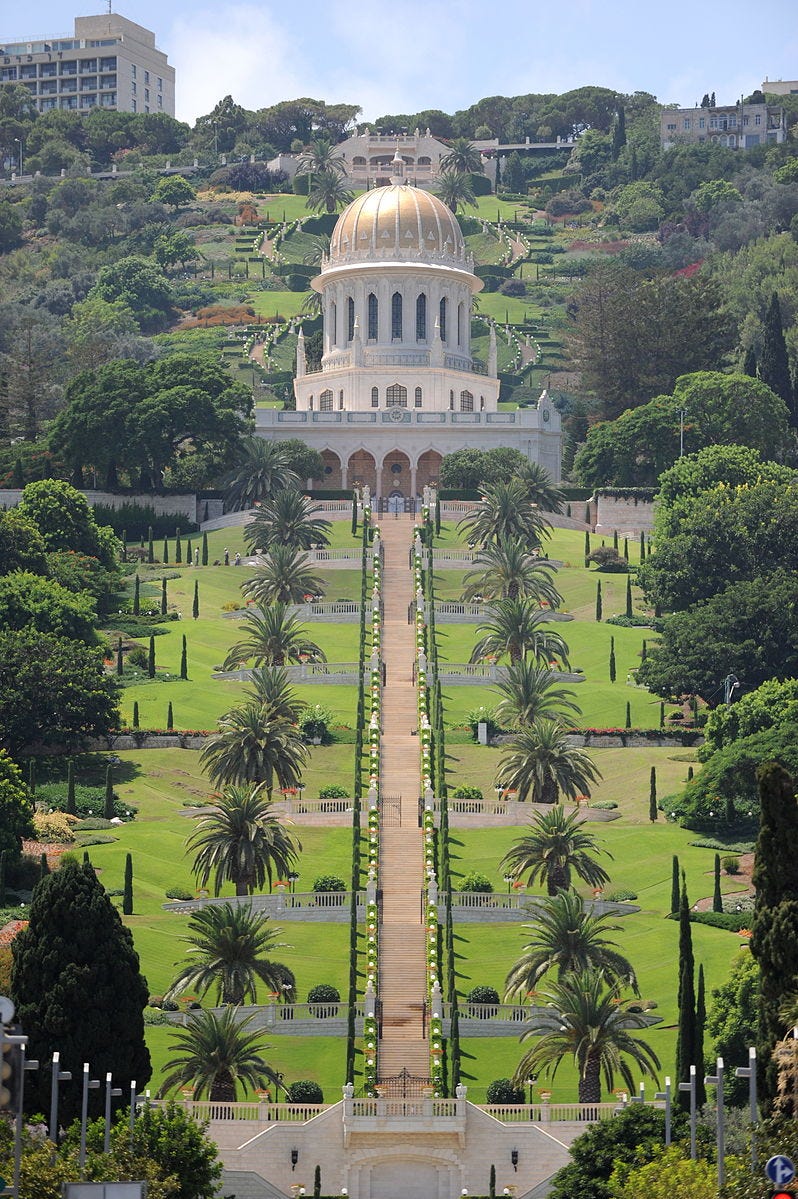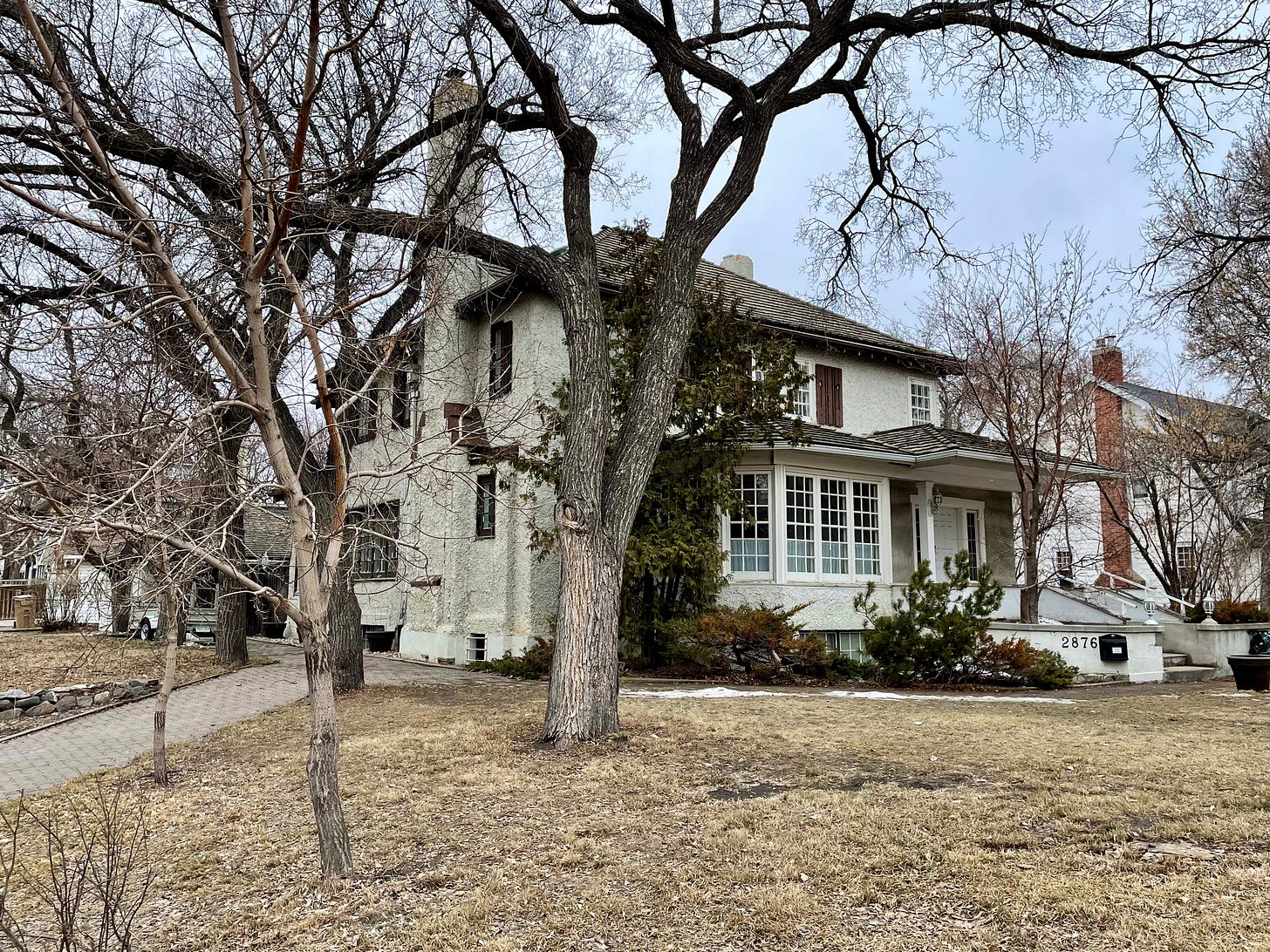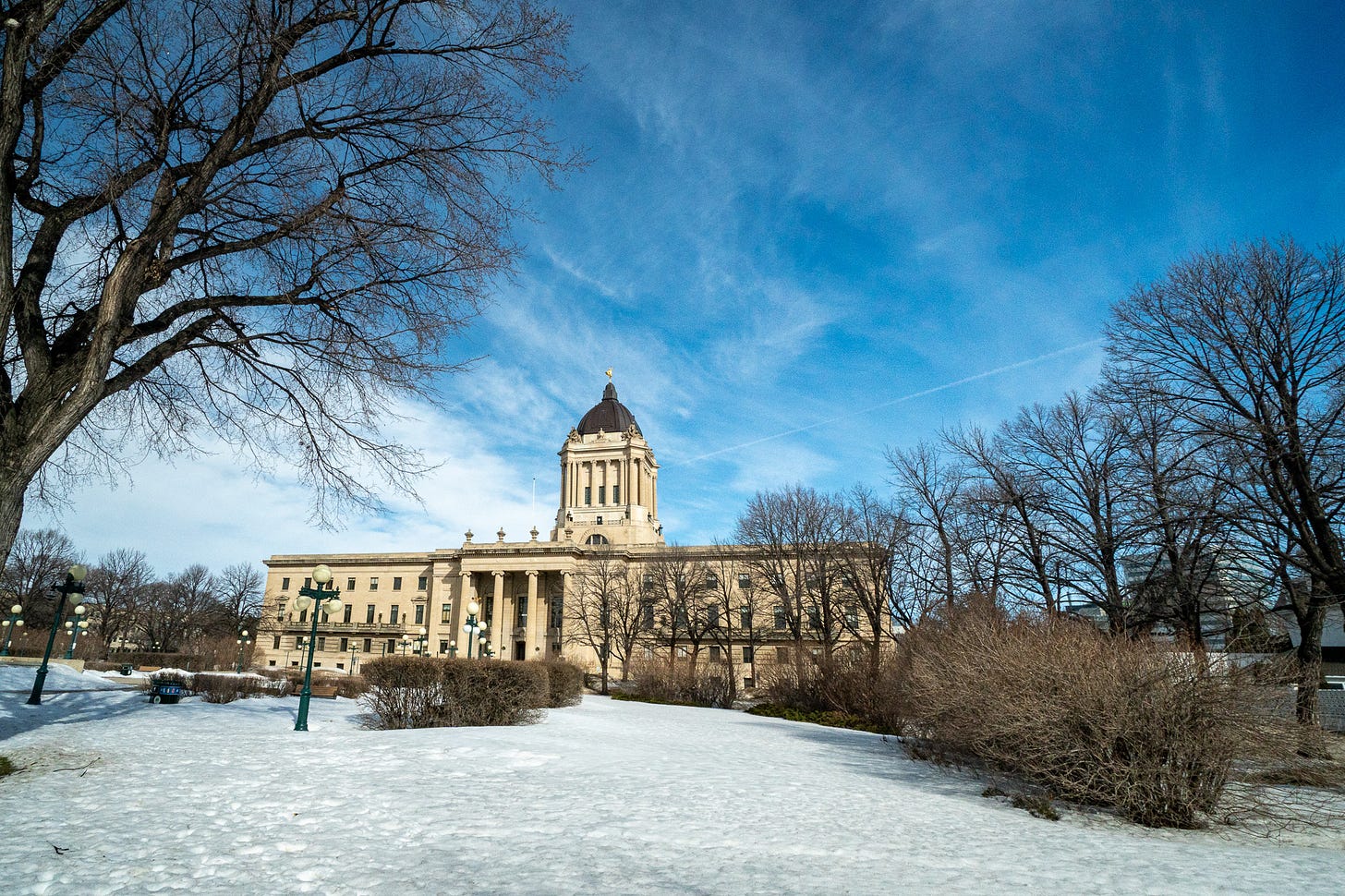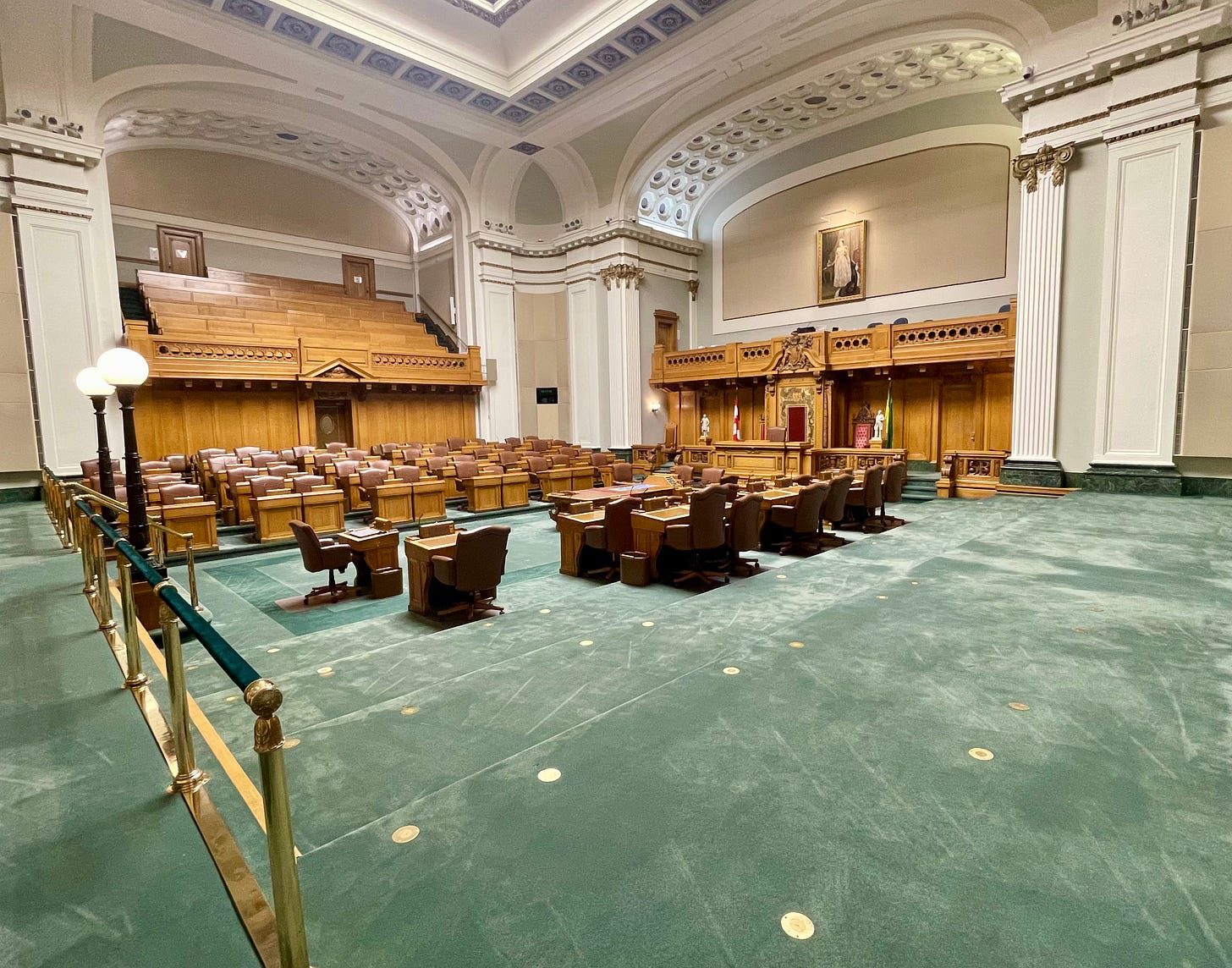The Ledge
Gateway to Purple City
Each of the three prairie capital cities—Winnipeg, Regina and Edmonton—has a magnificent beaux arts legislative building built in the first two decades of the last century and known locally as “The Ledge”. Each remains the most distinguished building in its respective city. And each is a gateway to Purple City, which I will get to a little later on.
I have always been besotted with the Manitoba legislature. My grandmother’s apartment building was across the street, and when I was little you could just wander in and look at the enormous bronze bison flanking the grandiose central staircase.
In the summer I turned 21, I had a summer job with the Chief Electoral Office of Manitoba and the office was in The Ledge. I had a buddy who was a summer student in another department; I will call him Danny to protect his identity since he is now a respected member of the Winnipeg business community.
In the course of his work, the person I am calling Danny had obtained a key that was intended to get him into a storeroom at the base of the central shaft underneath the cupola on which the Golden Boy is perched, 77 metres above the city. However, the key also gave him access to said shaft, and one day he proposed that a group of us go exploring.

The shaft turned out to be an enormous empty room pierced with tall narrow windows, filling the space with beams of light cutting through the dusty air. One of our group, who I will call Andy in the hope that some of you will be able to identify him, later became Commissioner of National Revenue and used to sign my tax refund cheques. However, when I got notices that I owed the government money, Andy’s name was notably absent, which always struck me as an exhibition of cowardice.
I believe I first detected Andy’s yellow streak that day in the Ledge because as I recall he refused to join us in scaling the admittedly wobbly and extremely tall spiral metal staircase in one corner that led up to the cupola. (Nearly fifty years have passed, so I may have got this detail wrong, but this is my truth.)
When the more intrepid among us reached the cupola, there was an even more rickety wooden scaffolding that allowed access to the little moon-shaped windows you can see in the photo. These allow a flashing light to beam to the city below when the legislature is sitting, assuring the citizenry that their legislators are hard at work, if they have not yet left for dinner.
The person I am calling Danny thought it would be a good idea to open one of these windows and have a look up at the Golden Boy from that unique perspective. The window was obviously not opened very often and after undoing the latch we pushed and banged to free it from its housing. Finally, in a heart-stopping moment it flew free of its frame and indeed of our hands and went tumbling into the open air.
Luckily, some farsighted provincial employee had thought to attach the window with a chain and it came to a rest with a thump a few feet below us.
Anyway, you can’t really see much of the Golden Boy from there.
The Manitoba Legislative Building is the most sumptuously appointed of the three prairie capital buildings and was designed by an architect, Frank Worthington Simon, who attended the École des Beaux-Arts in Paris, after which the beaux arts tradition of neoclassical architecture is named. Simon, I hasten to add, was not implicated in the huge corruption scandal that later engulfed the project and eventually brought down the government of Sir Rodman Roblin.
I always believed that the Saskatchewan Ledge was the largest of the three prairie capital buildings, but my guide this week told me it is a tiny bit smaller than Manitoba’s. However, it undoubtedly had the most interesting architect, about whom more below.
It is easy to forget—and indeed I had to double-check this factoid that had rattled around in my head for decades—that Saskatchewan was Canada’s third most populous province after Ontario and Quebec as late as the 1931 census.
When they were planning the Regina Ledge, the assumption was that the province would boom to a population of many millions by the end of the twentieth century, and that they needed a building to match. Saskatchewan currently has a little over a million people. The legislative chamber was built to accommodate 125 members, as opposed to its current 61, though all that space proved useful for social distancing during COVID.
The architects of the Saskatchewan Ledge were a pair of brothers, Edward and William Sutherland Maxwell. William had had a spell at the École des Beaux-Arts at the very end of the nineteenth century. While he was in Paris, Maxwell met some Americans who were members of the relatively recently founded Baháʼí faith and he became a member. ʻAbdu'l-Bahá, the son of the founder of the faith, visited Maxwell often at his home in Montreal, and in 1937 Maxwell’s daughter married Shoghi Offendi, by then the leader of the faith.
Besides the Saskatchewan Ledge, Maxwell designed the Shrine of the Báb, which is the faith’s second most important building, located in Haifa, Israel, and which I have visited several times, never suspecting its Saskatchewan connection. Maxwell was eventually named Hand of the Cause of God for his devotion, which sounds like it is probably a good thing.

The Alberta Ledge is the smallest of the three and is faced in brown sandstone rather than the white Manitoba Tyndall limestone that adorns the other two buildings. I worked in the building for a while in the 1980s as the CBC’s provincial politics reporter and found it very pleasant, though notably less spacious than the other capital buildings. What I never suspected at the time was that it harboured a mystical connection to my youth in the form of the previously mentioned Purple City.
To explain, in our sensation-craving youth, my friends and I would sometimes go to the Ledge in Winnipeg to experience Purple City. I say “experience” because in those days we swore a solemn oath never to tell anyone about Purple City, only to bring them to the Ledge to experience it. As I will explain below, I have only now been freed from this oath of secrecy by the indiscretion of others.
If you were an initiate to Purple City, you would be invited to trample through the vegetation surrounding the Ledge and to stare into one of the yellow floodlights pointed at the building. They were very bright, but in time your eyes would become accustomed to them. You would be invited to stare until you could see the inner mechanism of the bulb.
Once you reached that point, you would be instructed to stand up and look around, often to the proclamation: “Behold, Purple City!” And indeed the bright lights of downtown Winnipeg would all appear a deep shade of purple, and would remain so for several minutes, such was the power of the floodlights.
I had all my life assumed that this admittedly bizarre practice was limited to me and my friends, and of course the secrecy surrounding it meant that there were limits to the dissemination of the knowledge. But in my extensive research for this post, I came across the following entry in Wikipedia in the article on the Alberta Ledge, which gives everything away.
Let me say that “The Rural Alberta Advantage” is a fabulous name for an indie band. You can listen to their song, Edmonton, by clicking on the link, and it’s pretty good.
The relevant passage comes in the final verses of the the song.
…Run away again
From this Alberta pen
And I will never try
To forget your northern eyes
Meet me there again
Under the lights at the Ledge
And we will burn our eyes
Seeking out these purple nights
Meet me there again
Under the lights at the Ledge
And we will burn our eyes
Seeking out these purple nights
Forgive me a moment as I wipe away a tear. For some reason, my eyes have always been a problem.







I can attest to many of the details of your trek through the upper bowels of the Manitoba Legislature, including climbing the rickety metal staircase, as can our mutual friend actually named Dan. It was worth the view for the then 3 students working at the Leg.
This post touched me on many levels, good humour. It brought me back to fun times at Ottawa U in the early 70s.
U of O Tabaret Hall looking similar to the 3 Ledges with it's one row of columns and stairway to education.
Oddly the Purple City lights put me into Prince's Purple Rain song, though the meaning is very different-
''When there’s blood in the sky… red and blue = purple''. ''could have sworn it was Judgment Day, the sky was all purple… '' hmm? stage lights made it purple, an inspiration?
Who can forget Colin Thatcher...
Thanks,
Drive safe